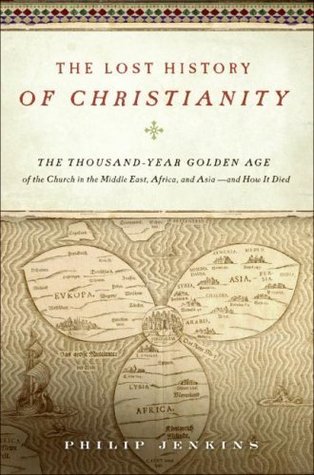More on this book
Community
Kindle Notes & Highlights
As in Egypt or Mesopotamia, Asia Minor gained a Muslim majority less by forcing existing residents to convert than by importing Muslim populations.
the Turks used a similar immigration strategy to remodel the Balkans in the Muslim image.
medieval societies could expect no assistance from benevolent external powers: there would be no Marshall Plan.
Consider, for instance, the devastation that plague wrought in the structures of the Christian churches of France and England, which suffered long vacancies in bishoprics and other offices.
Once, Christians knew Tikrit as the site of a great monastery and fine churches. From the twelfth century, though, it was famous as the birthplace of Saladin,
In the thirteenth century, a mosque was built over the remains of the monastery.
Christian who used the greeting “Salaam aleikum” risked getting a beating or worse.
“As late as 1820, no Christian in Damascus could wear anything but black, or could ride a horse.” A nineteenth-century visitor to northwest Persia remarked that [t]he Nestorian is not allowed a place in the bazaar; he cannot engage in commerce.
the long sequence of Ottoman victories meant that it would be over four centuries before Muslims ceased extending their power over new groups of Christians, or until Christian states and forces once more gained the upper hand in their struggles against Muslim forces.
what turned Christians to Islam was “the common acceptance by Muslim and Christian alike of the error that the favor of God is shown by worldly success.”
compare the fate of Christianity in two regions that in different ways had been critical to the development of the early church. Muslim forces occupied Egypt in the middle of the seventh century, and North Africa (roughly, Algeria and Tunisia) over the following fifty years or so. In Egypt, the Coptic Christians coped impressively with the new regime. Coptic Christianity flourishes today, in stark contrast to the faith of North Africa, which was all but extinct within a hundred years of the coming of the Arabs.
Christian traditions developed in Carthage rather than Rome, and Africa was the home of such great early leaders as Tertullian, Cyprian, and Augustine.
By the late fifth century, North Africa had five or six hundred bishoprics, while monasteries were a familiar part of the local social landscape.
When nineteenth-century scholars translated the hieroglyphics on the Rosetta Stone, they did so by using the language they found spoken in the liturgies of the Coptic church.
One measure of the Coptic achievement is the Life of Saint Antony, who was born around 270 and who became the founder of Christian monasticism.
Aunt Safiyya and the Monastery, by Egyptian writer Bahaa' Taher.
Christian kingdoms of Armenia and Georgia flourished in the Caucasus, and no part of Armenia is below thirteen hundred feet.
Besides long providing a refuge for Christians, northern Iraq is also the last home for the Yezidis, a sect that inherits many beliefs and practices from the ancient Zoroastrians.
Mesopotamia’s Christians were progressively dislodged and largely destroyed by another group of mountain tribes—namely, the Kurds.
If we look at a map of the hilly Kurdistan that modern-day activists seek to carve out of several Middle Eastern nations, we can see an accurate portrayal of the lost Christian Mesopotamia.
Historically, all major religions have produced multiple instances of intolerance and persecution, and the scriptures of Islam include considerably fewer calls to blood-curdling violence than do their Christian and Jewish counterparts: witness Joshua’s conquest of the land of Canaan, or the ethnic purges associated with Ezra and Nehemiah. Nor, of course, has any Muslim regime ever approached the sophisticated annihilation campaigns of modern ultrasecular regimes, under Hitler and Stalin, Mao and Pol Pot. At various times, some Muslim regimes have been inconceivably brutal, others mild and
...more
when churches view sin as dysfunction, an issue for therapy rather than prayer, Christians are indeed able to participate in national discourse, but they do not necessarily have anything to offer that is distinctive.
Shusaku Endo’s novel Silence
How can we account for such devastating reversals as the annihilation of the church in North Africa, the crushing of Catholic missions in Asia, and, above all, the strangulation of the faith in the Middle East?
Presumably, each of these failures happened regardless of countless fervent but unanswered prayers.
today Spain has perhaps a million Muslims,


